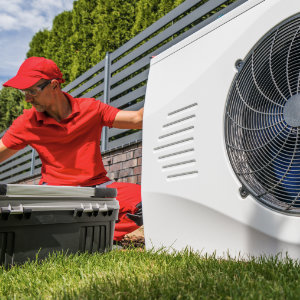Octopus Energy has announced an all-in-one electric car leasing package that includes the electricity required to run the car. For £299 per month, you receive a BYD Dolphin hatchback, a bi-directional Zaptec Pro charger, and access to a smart tariff that includes free home charging. This innovative technology, known as Vehicle-to-Grid (V2G), enables electric vehicles (EVs) to charge during off-peak hours and supply energy back to the grid when demand is high, potentially saving drivers up to £620 per year if they drive 7,500 miles annually.
How can Octopus Energy give you free electricity to drive?

Renewable energy sources, such as solar and wind, experience fluctuations in production due to their dependence on weather conditions like wind and sunlight. In contrast, hydroelectric power is less affected by these variations, except during droughts. These fluctuations result in “peaks” and “troughs” in renewable energy generation. Similarly, there are “peaks” and “troughs” in electricity demand on the grid. For example, when we return home from work, we tend to cook and may charge our electric vehicles, leading to higher demand. At night, however, demand decreases, resulting in cheaper electricity prices. Octopus is working on creating a large-scale energy storage system using electric vehicles to help even out these fluctuations.
Excess renewable energy generation
Excess generation occurs when conditions are optimal for energy production. For solar panels, peaks are typically during sunny days when sunlight is abundant, especially around midday. For wind turbines, peaks occur when wind conditions are strong and consistent, typically during specific seasons or periods of consistent weather.
And there are the energy troughs.
In contrast, troughs occur when energy production is low. For solar power, this happens during cloudy days, at night, or in the winter months when daylight hours are shorter. For wind energy, troughs can occur during calm weather when there is little to no wind. A mixture of both, and we’re back to fossil fuels or nuclear, or could electric vehicle batteries help plug the gaps?
These fluctuations present challenges for energy grid management, as the supply of renewable energy may not always match demand. To address this issue, solutions such as energy storage systems, demand response programs, and smart grid technologies are being implemented. These innovations help balance supply and demand, allowing us to maximise the use of renewable energy even when production is low.
Currently, generators get paid to turn off renewable energy.
Wind generation often shuts down during periods of excess electricity generation for several key reasons, including grid stability. Electrical grids must maintain a balance between supply and demand. When there is an overproduction of electricity, it can lead to instability in the grid. Excess electricity can strain the system, causing fluctuations that could damage infrastructure or lead to power outages.
Occasionally, during peak generation periods (especially from renewable sources like wind and solar), prices in wholesale electricity markets can drop to zero or even become negative. When Negative Pricing occurs, there’s more electricity generated than is required. In such cases, utilities may pay wind farms to reduce production to avoid the costs associated with excess generation.
Renewable energy operators typically have agreements that allow them to shut down when energy demand exceeds supply and receive compensation to help cover operational costs, even if they’re not generating power. Unlike fossil fuel plants, many renewable energy sources lack effective storage solutions. Thus, turning off generation becomes a necessary action to control grid instability.

So what’s in it for Octopus Energy?
Octopus is an energy retailer that purchases electricity from the generators. It’s also a software company supplying services to the energy sector. They don’t own any nuclear plants, like EDF, or Gas turbines, like Centrica (British Gas). They are buying energy from the market, then selling it to us. I expect they would like to generate more of their energy; however, getting this new generation on stream is a little challenging.
Is this a game-changer for Octopus Energy?
Suddenly, Octopus may metamorphose from an energy retailer to a significant energy storage supplier. Raising profits for storing excess electrons in their mass fleet on BYD electric car batteries when energy is cheap, then feeding it back during high demand at a handsome return? It is a better solution than turning off renewable generation – and a more efficient use of clean energy.
Best of all, they attract customers to finance their energy storage business model by offering free motoring electricity to those who participate in the scheme. That’s smart!

































